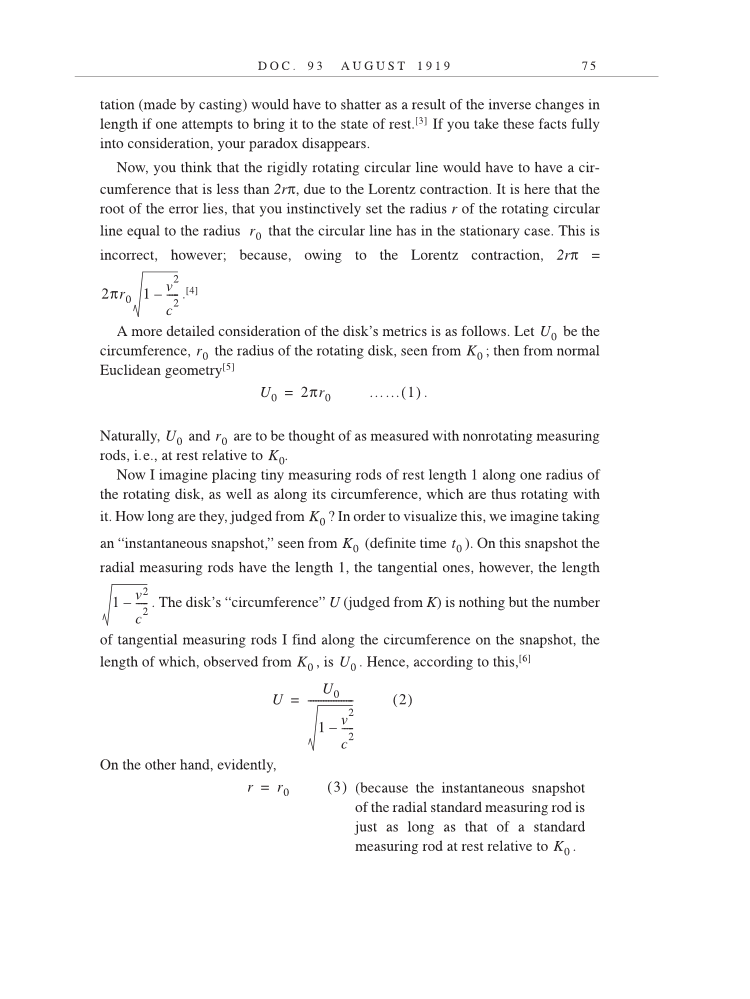D O C . 9 3 A U G U S T 1 9 1 9 7 5 tation (made by casting) would have to shatter as a result of the inverse changes in length if one attempts to bring it to the state of rest.[3] If you take these facts fully into consideration, your paradox disappears. Now, you think that the rigidly rotating circular line would have to have a cir- cumference that is less than 2rπ, due to the Lorentz contraction. It is here that the root of the error lies, that you instinctively set the radius r of the rotating circular line equal to the radius that the circular line has in the stationary case. This is incorrect, however because, owing to the Lorentz contraction, 2rπ = .[4] A more detailed consideration of the disk’s metrics is as follows. Let be the circumference, the radius of the rotating disk, seen from then from normal Euclidean geometry[5] . Naturally, and are to be thought of as measured with nonrotating measuring rods, i.e., at rest relative to Now I imagine placing tiny measuring rods of rest length 1 along one radius of the rotating disk, as well as along its circumference, which are thus rotating with it. How long are they, judged from ? In order to visualize this, we imagine taking an “instantaneous snapshot,” seen from (definite time ). On this snapshot the radial measuring rods have the length 1, the tangential ones, however, the length . The disk’s “circumference” U (judged from K) is nothing but the number of tangential measuring rods I find along the circumference on the snapshot, the length of which, observed from , is . Hence, according to this,[6] On the other hand, evidently, r0 2πr0 1 v2 c2 ---- -– U0 r0 K0 U0 2πr0 = ……(1) U0 r0 K0. K0 K0 t0 1 v2 c2 ---- -– K0 U0 U U0 1 v2 c2 ---- -– ------------------ = 2) ( r r0 = 3) ( (because the instantaneous snapshot of the radial standard measuring rod is just as long as that of a standard measuring rod at rest relative to . K0
